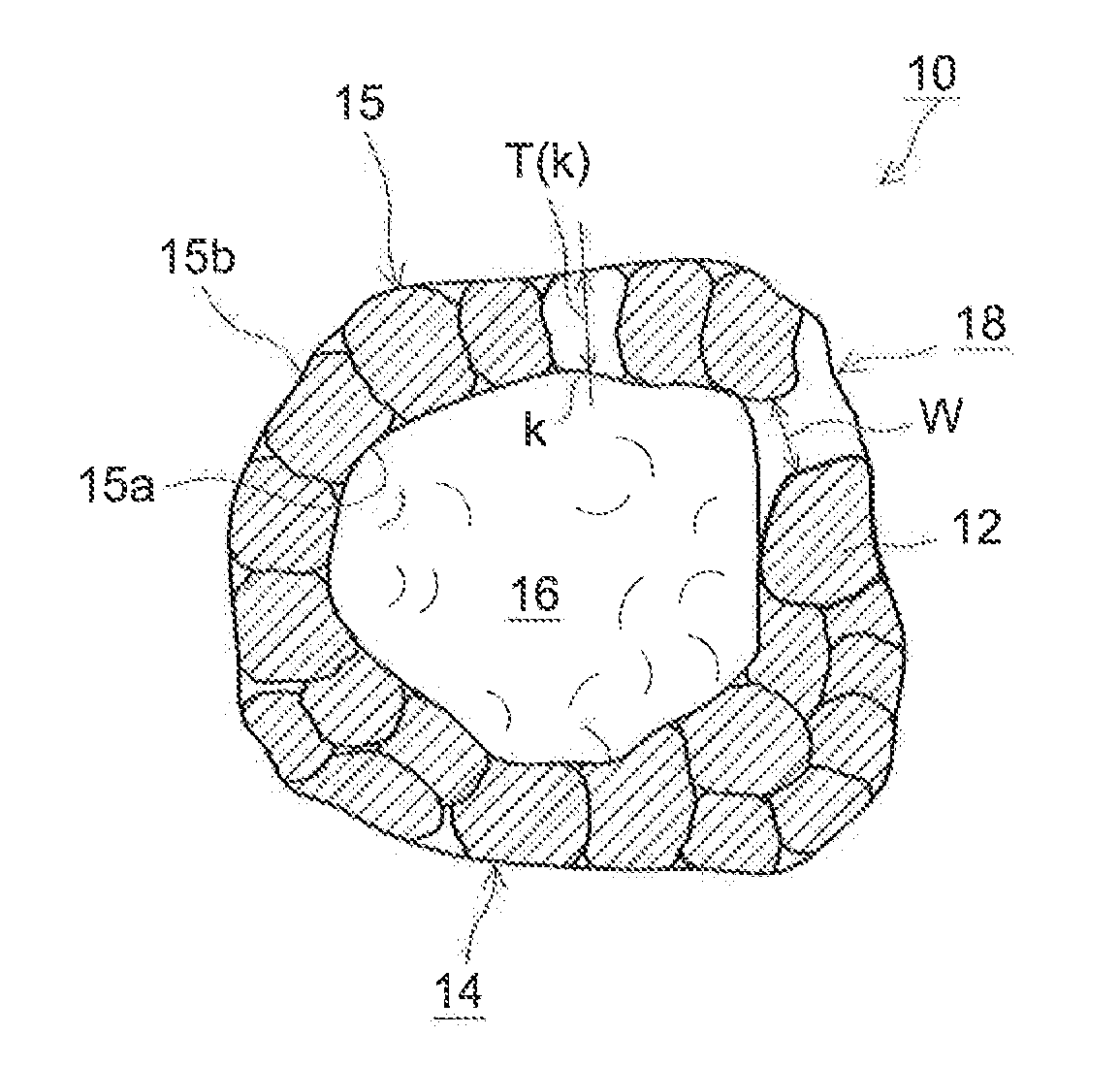Lithium rechargeable battery
a rechargeable battery and lithium technology, applied in the direction of nickel compounds, cell components, sustainable manufacturing/processing, etc., can solve the problems of reducing affecting the operation, and affecting the output characteristics of the battery, so as to reduce the number of batteries necessary to secure the required amount of energy, the effect of stable operation
Active Publication Date: 2014-07-24
TOYOTA JIDOSHA KK
View PDF10 Cites 30 Cited by
- Summary
- Abstract
- Description
- Claims
- Application Information
AI Technical Summary
Benefits of technology
[0005]Vehicles that can be driven by an electric motor, such as so-called hybrid vehicles and electric automobiles, can be driven by only the power stored in the battery. The output of this battery tends to decline as the state of charge (SOC) declines. It is desirable, in order to achieve a stable operation, to use a battery within a prescribed SOC range. The operating performance of
Problems solved by technology
Moreover, when a plurality of primary particles comprising this crystal undergoes aggregation to form a secondary particle, diffusion of the Li ion is impeded due to the presence of grain boundaries within this particle.
This reduction in the Li ion diffusivity can cause a decline in battery performance (for example, a decli
Method used
the structure of the environmentally friendly knitted fabric provided by the present invention; figure 2 Flow chart of the yarn wrapping machine for environmentally friendly knitted fabrics and storage devices; image 3 Is the parameter map of the yarn covering machine
View moreImage
Smart Image Click on the blue labels to locate them in the text.
Smart ImageViewing Examples
Examples
Experimental program
Comparison scheme
Effect test
 Login to View More
Login to View More PUM
 Login to View More
Login to View More Abstract
The lithium rechargeable battery of the present invention is provided with a current collector and an active material layer containing active material particles 10 supported on this current collector. The active material particles 10 are secondary particles 14 in which a plurality of primary particles 12 of a lithium transition metal oxide are aggregated, and have a hollow structure that contains a hollow section 16 formed inside the secondary particle 14 and a shell section 15 that surrounds the hollow section 16. A through hole 18 that penetrates from the outside to the hollow section 16 is formed in the secondary particle 14. The ratio (A/B) in a powder x-ray diffraction pattern of the active material particles 10, where A is the full width at half maximum of the diffraction peak obtained for the (003) plane and B is the full width at half maximum of the diffraction peak obtained for the (104) plane, satisfies the equation (A/B)≦0.7.
Description
TECHNICAL FIELD[0001]The present invention relates to a lithium rechargeable battery. More particularly, the present invention relates to a lithium rechargeable battery that contains active material particles formed of a lithium transition metal oxide.[0002]This international application claims priority based on Japanese Patent Application No. 2011-189422 filed on 31 Aug. 2011, and the contents of that application are incorporated in their entirety in this Description by reference.BACKGROUND ART[0003]Lithium ion batteries, nickel hydride batteries, and other rechargeable batteries have become increasingly important in recent years as vehicular power sources and as power sources for personal computers and mobile and portable electronic devices. In particular, the lithium rechargeable battery, which provides a high energy density at a low weight, is preferentially used as a high-output power source for installation in vehicles. In a lithium rechargeable battery, materials (the active ...
Claims
the structure of the environmentally friendly knitted fabric provided by the present invention; figure 2 Flow chart of the yarn wrapping machine for environmentally friendly knitted fabrics and storage devices; image 3 Is the parameter map of the yarn covering machine
Login to View More Application Information
Patent Timeline
 Login to View More
Login to View More IPC IPC(8): H01M4/36C01G53/00
CPCC01G53/50C01P2002/50C01P2004/03C01P2004/62H01M4/13H01M4/131H01M4/364H01M4/366H01M4/525H01M10/052H01M2004/021Y02E60/122Y02T10/7011C01G53/006H01M4/36Y02E60/10C01G53/04H01M4/139H01M4/48H01M4/485H01M4/505Y02P70/50Y02T10/70
Inventor NAGAI, HIROKIOYAMA, YUTAKA
Owner TOYOTA JIDOSHA KK
Features
- R&D
- Intellectual Property
- Life Sciences
- Materials
- Tech Scout
Why Patsnap Eureka
- Unparalleled Data Quality
- Higher Quality Content
- 60% Fewer Hallucinations
Social media
Patsnap Eureka Blog
Learn More Browse by: Latest US Patents, China's latest patents, Technical Efficacy Thesaurus, Application Domain, Technology Topic, Popular Technical Reports.
© 2025 PatSnap. All rights reserved.Legal|Privacy policy|Modern Slavery Act Transparency Statement|Sitemap|About US| Contact US: help@patsnap.com



